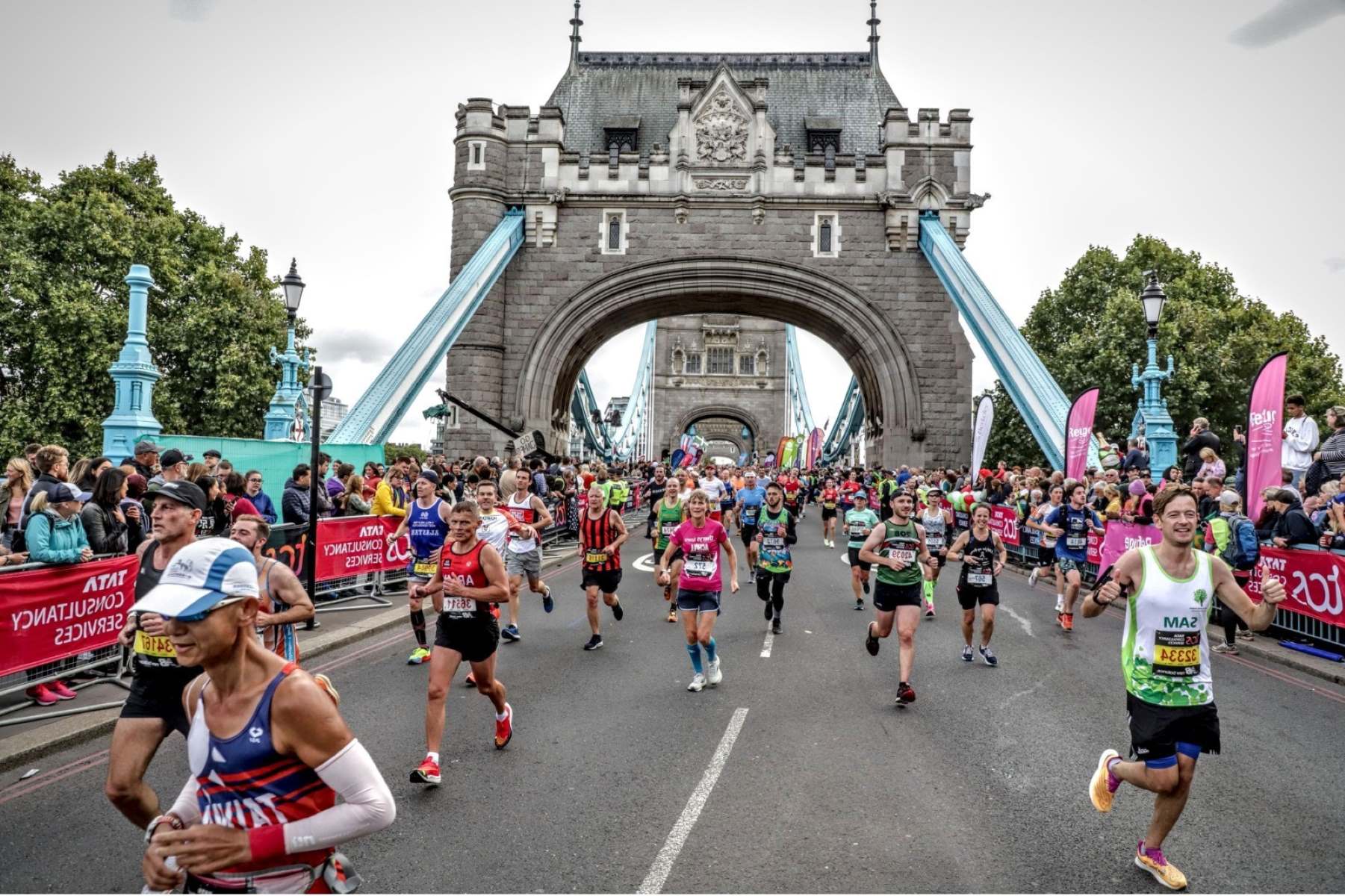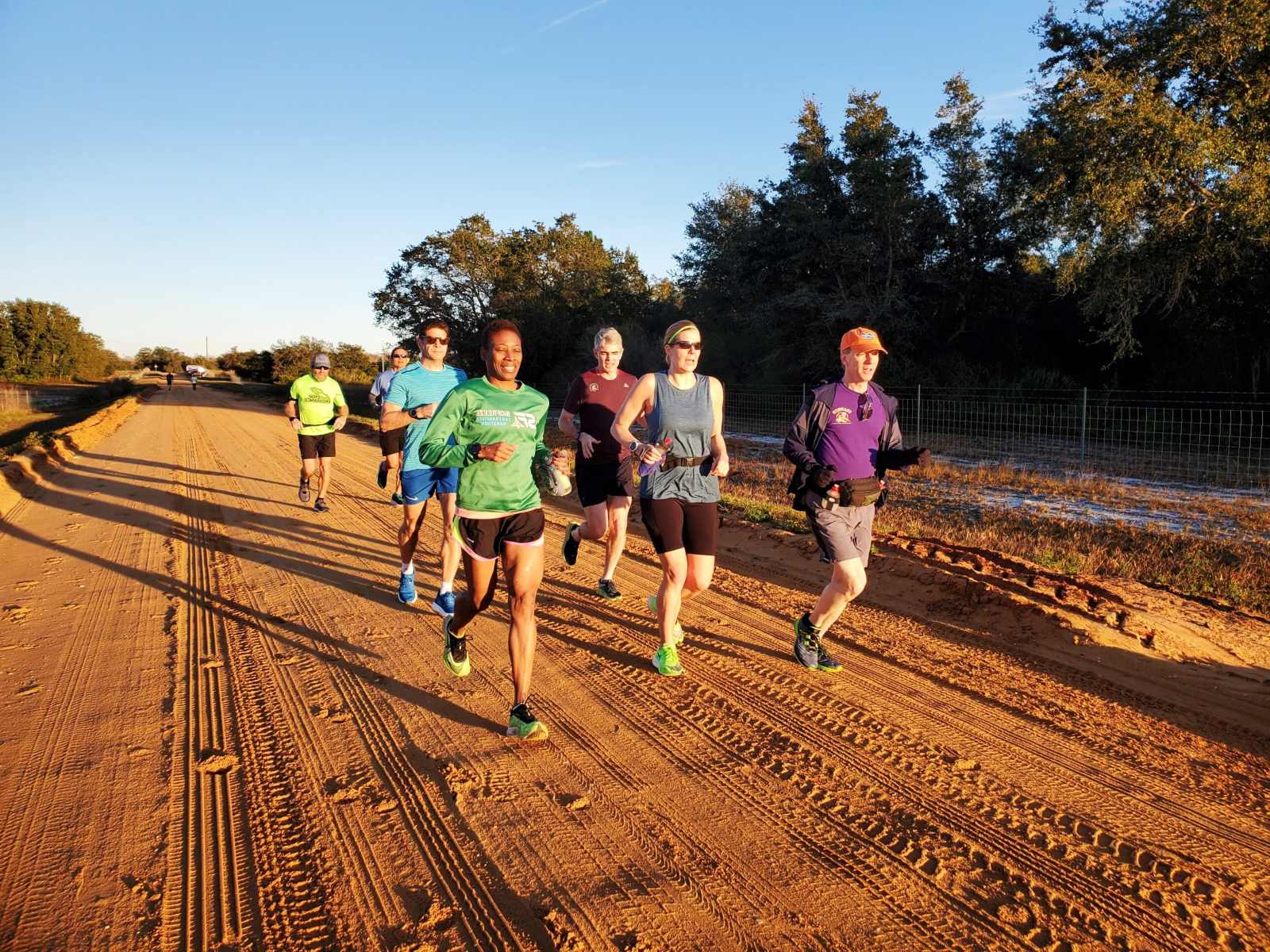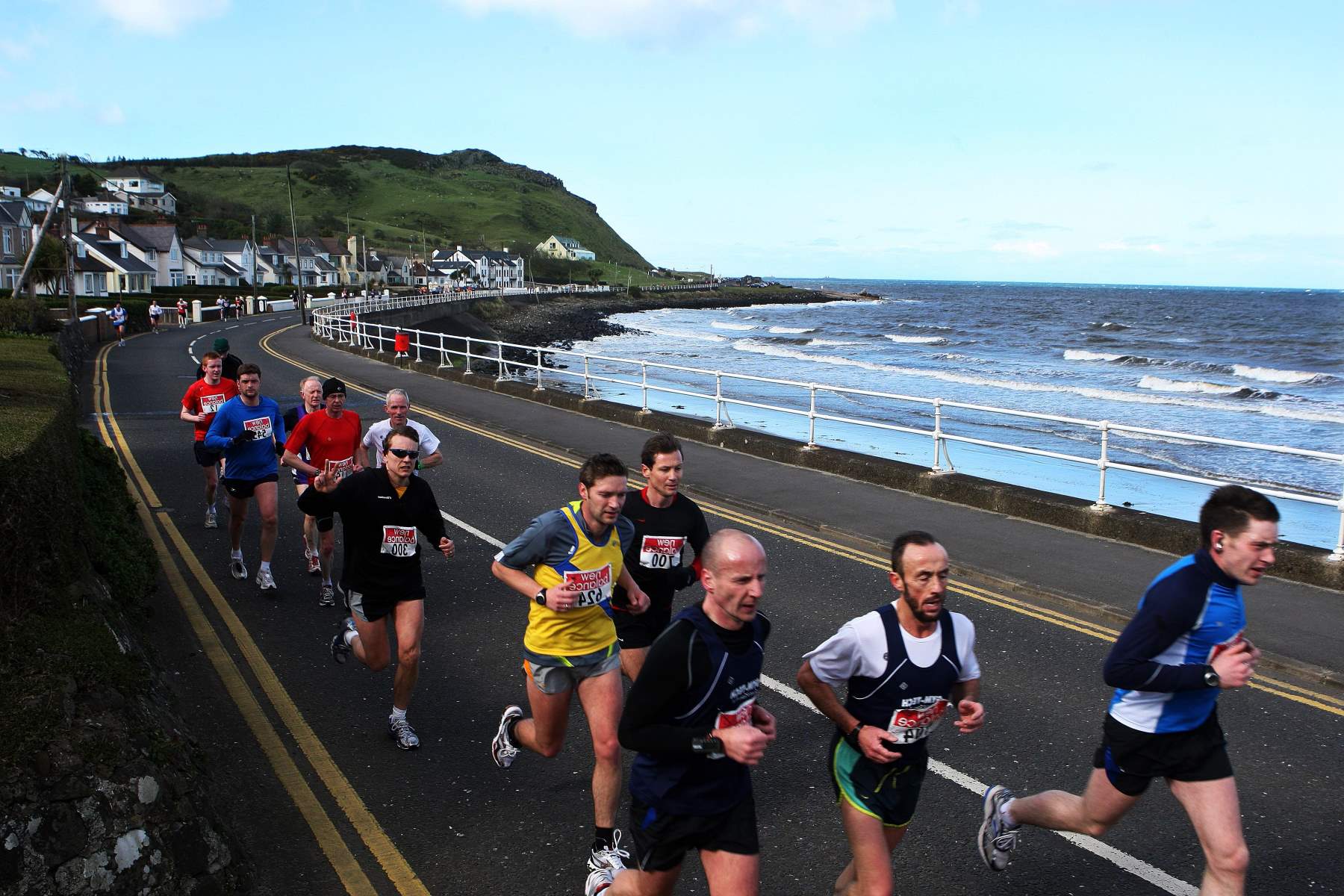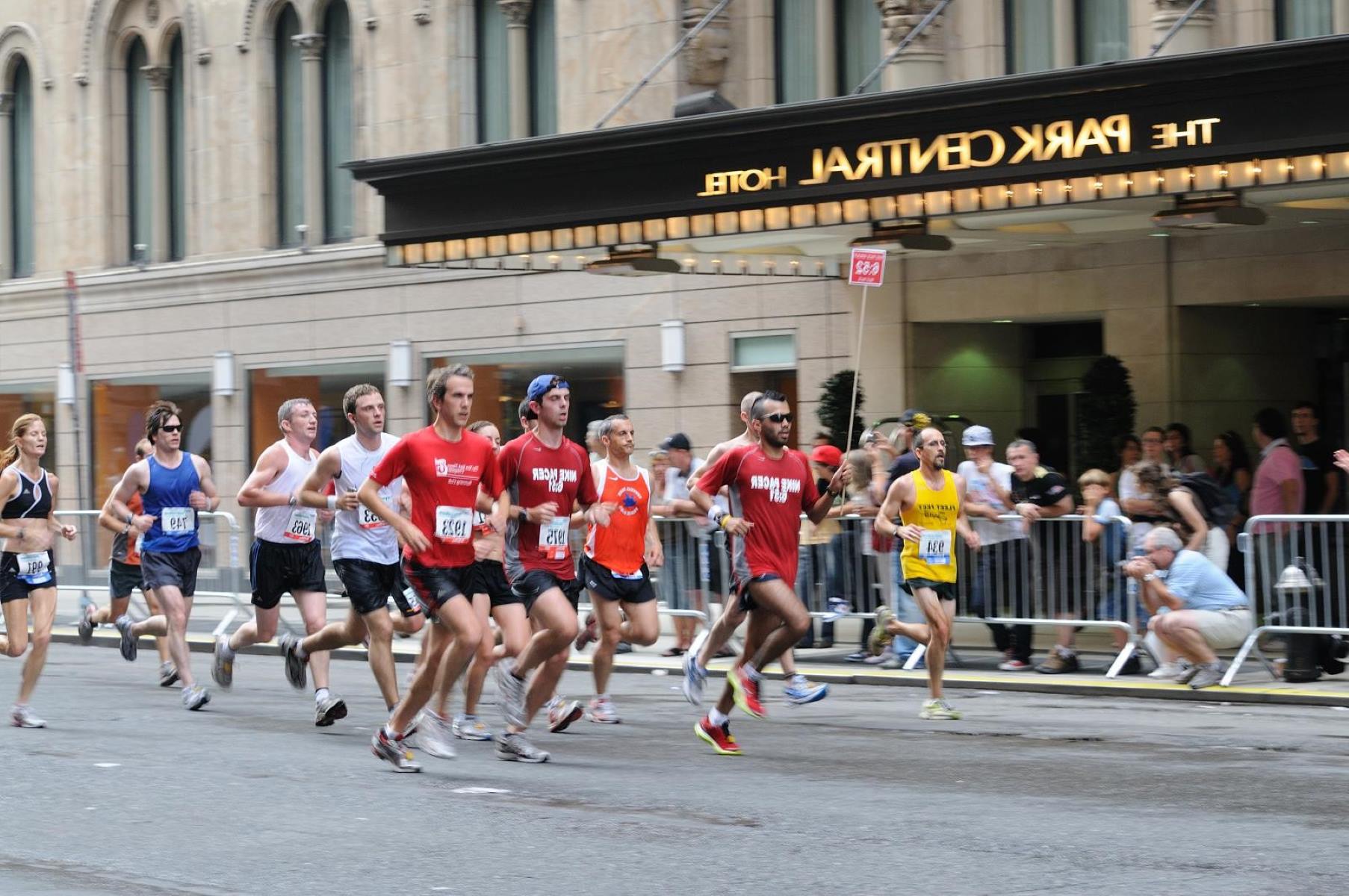Home>Races & Events>An Introduction To The Marathon Des Sables
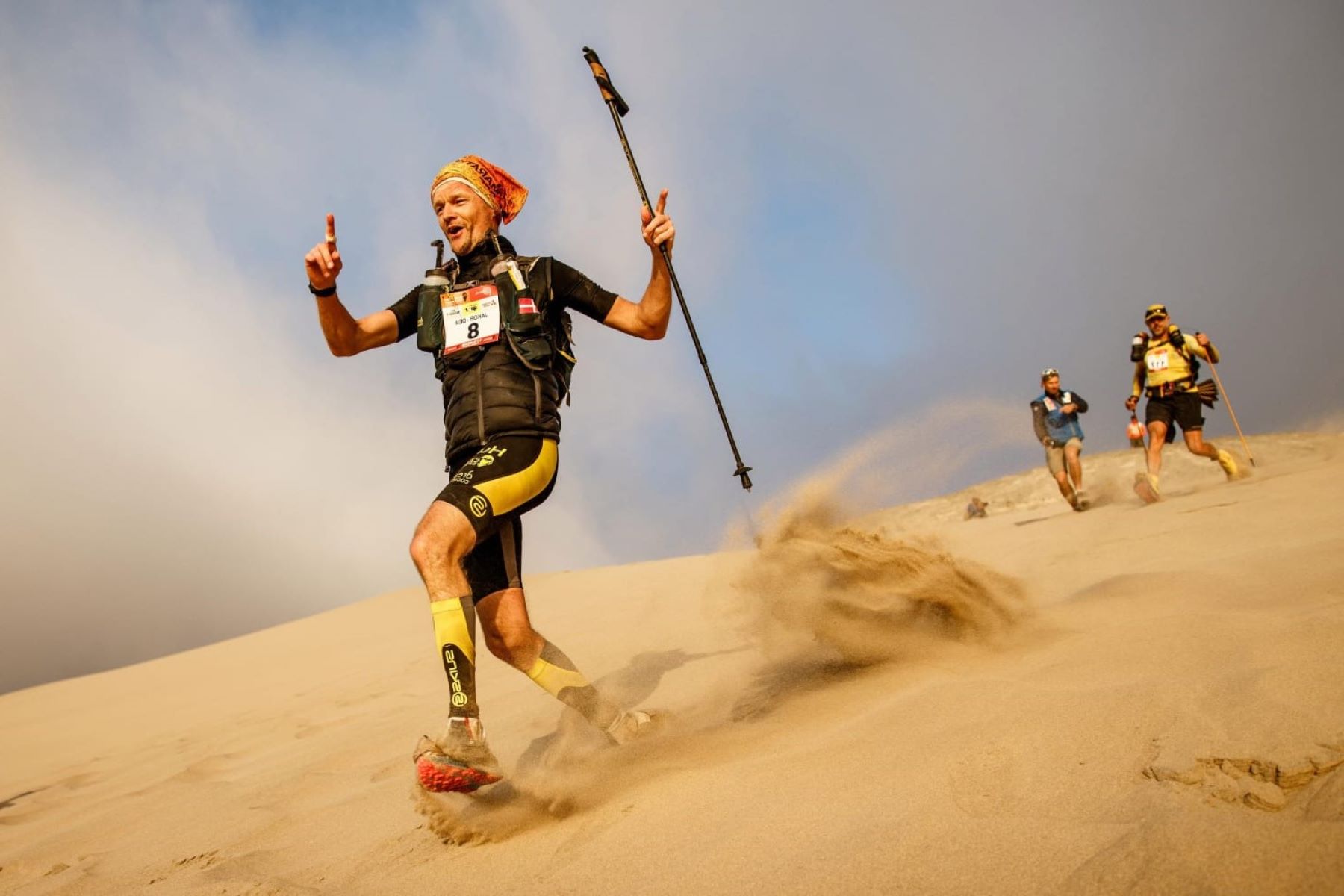

Races & Events
An Introduction To The Marathon Des Sables
Published: March 2, 2024
Discover the ultimate endurance challenge with our guide to the Marathon des Sables. Learn about this iconic race and other thrilling events in the world of endurance sports.
(Many of the links in this article redirect to a specific reviewed product. Your purchase of these products through affiliate links helps to generate commission for Therunningadvisor.com, at no extra cost. Learn more)
Table of Contents
What is the Marathon des Sables?
The Marathon des Sables, often referred to as MdS, is a grueling and iconic ultramarathon that tests the physical and mental endurance of participants. It is widely considered one of the toughest foot races on the planet, attracting adventure seekers, endurance athletes, and running enthusiasts from around the world. The event takes place in the Sahara Desert, specifically in southern Morocco, where participants traverse approximately 250 kilometers (156 miles) over the course of six days.
This multi-stage race is not your typical marathon. Participants are required to be self-sufficient, carrying all their food, clothing, and essential equipment for the duration of the event, except water and a tent. The race is divided into several stages, with varying distances each day, including a long stage that can exceed 80 kilometers (50 miles). The terrain is unforgiving, featuring vast sand dunes, rocky hamada, and blistering desert plains, presenting a formidable challenge to even the most seasoned runners.
The Marathon des Sables is not just a physical test; it is a journey of self-discovery and resilience. Participants are pushed to their limits, enduring scorching daytime temperatures and bone-chilling nights, all while navigating the harsh desert landscape. The race demands mental fortitude, strategic planning, and unwavering determination to conquer each stage and ultimately reach the finish line.
For many, the Marathon des Sables represents the ultimate adventure, offering a rare opportunity to experience the raw beauty and relentless nature of the Sahara Desert while pushing the boundaries of human endurance. It is a test of character, courage, and the indomitable human spirit, attracting individuals who seek to challenge themselves in the most extreme conditions.
In essence, the Marathon des Sables is not just a race; it is an extraordinary odyssey that transcends the traditional concept of running, embodying the relentless pursuit of personal achievement and the triumph of the human will against the backdrop of one of the world's most formidable environments.
History of the Marathon des Sables
The Marathon des Sables, a legendary ultra-endurance race, was conceived by French concert promoter Patrick Bauer in 1984. The event's origins can be traced back to Bauer's personal experience of traversing the Sahara Desert alone, a transformative journey that inspired him to create a race that would challenge others to push their limits in the unforgiving desert terrain.
The inaugural Marathon des Sables took place in 1986, with 23 participants embarking on a pioneering adventure through the Moroccan Sahara. The race, spanning approximately 350 kilometers (217 miles) over a period of 12 days, captured the imagination of endurance athletes and adventurers worldwide. From its humble beginnings, the event has evolved into a globally renowned ultramarathon, attracting a diverse array of participants seeking to test their mettle in one of the world's most formidable environments.
Over the years, the Marathon des Sables has undergone significant developments, including adjustments to the race format, route variations, and enhanced safety measures. The event's reputation for pushing the boundaries of human endurance has continued to grow, drawing elite athletes, amateur runners, and individuals from all walks of life who are driven by the desire to conquer the desert and challenge their own perceived limitations.
Notably, the Marathon des Sables has garnered widespread acclaim for its commitment to environmental sustainability and responsible desert travel. Organizers have implemented measures to minimize the ecological impact of the race, emphasizing the importance of preserving the delicate balance of the Sahara's ecosystem.
As the Marathon des Sables enters each new edition, it remains a testament to the indomitable human spirit and the relentless pursuit of personal achievement. The race's rich history is woven with tales of triumph, perseverance, and the unbreakable bond forged among participants as they navigate the arduous desert landscape.
In essence, the Marathon des Sables stands as a testament to the enduring legacy of human exploration and the unyielding pursuit of extraordinary challenges. It continues to inspire individuals to embark on a transformative journey through the heart of the Sahara Desert, embodying the spirit of adventure, resilience, and the relentless pursuit of the extraordinary.
The Route and Terrain
The Marathon des Sables presents a formidable test of endurance, with its route traversing some of the most challenging and awe-inspiring terrain in the world. The race unfolds against the breathtaking backdrop of the Moroccan Sahara, where participants navigate a diverse and unforgiving landscape that encompasses towering sand dunes, rocky hamada, and vast desert plains.
The route of the Marathon des Sables is meticulously designed to push participants to their limits, both physically and mentally. Spanning approximately 250 kilometers (156 miles) over the course of six days, the race is divided into several stages, each presenting its own unique set of challenges. From the undulating dunes of Erg Chebbi to the rugged Jebel El Otfal mountain range, the route demands adaptability and resilience as participants confront a myriad of terrains.
One of the most iconic features of the race is the renowned "Long Stage," a grueling test of endurance that spans over 80 kilometers (50 miles). This stage, often conducted in a single day, pushes participants to dig deep and summon their inner strength as they traverse the vast expanse of the desert, navigating by markers and orienteering through the shifting sands.
The terrain of the Marathon des Sables is as diverse as it is unforgiving. Participants must contend with the soft, yielding sands of the dunes, where each step requires immense effort and determination. The rocky hamada presents its own set of challenges, with uneven terrain and sharp protrusions testing the resilience of both feet and equipment. The expansive desert plains, characterized by scorching temperatures and relentless sun, demand unwavering resolve as participants push forward under the unrelenting gaze of the Sahara.
Navigating the route of the Marathon des Sables requires not only physical prowess but also mental fortitude. Participants must adapt to the ever-changing landscape, employing strategic navigation and pacing themselves to conserve energy for the arduous stages that lie ahead. The route and terrain of the Marathon des Sables stand as a testament to the unyielding spirit of human endeavor, challenging participants to confront the raw power and beauty of the Sahara Desert while pushing the boundaries of their own capabilities.
In essence, the route and terrain of the Marathon des Sables embody the essence of adventure and endurance, offering participants a transformative journey through some of the most awe-inspiring and formidable landscapes on the planet. It is a test of character, resilience, and the unbreakable human spirit, where each step taken represents a triumph over the untamed forces of nature.
Training for the Marathon des Sables
Training for the Marathon des Sables is a multifaceted endeavor that demands meticulous preparation, unwavering dedication, and a comprehensive approach to physical and mental conditioning. Aspiring participants must embark on a rigorous training regimen that encompasses various elements, including endurance, strength, heat acclimatization, and mental resilience, to adequately prepare for the challenges that await in the unforgiving terrain of the Sahara Desert.
Endurance forms the cornerstone of Marathon des Sables training, as participants must build the capacity to cover marathon distances on consecutive days while carrying a backpack laden with essential supplies. Long-distance running, supplemented by back-to-back training runs, is essential for developing the physical stamina required to endure the grueling stages of the race. Incorporating varied terrain and elevation into training runs helps simulate the conditions participants will encounter during the event, preparing them for the demanding landscape of sand dunes, rocky hamada, and desert plains.
Strength training plays a pivotal role in preparing the body for the rigors of the Marathon des Sables. Participants must strengthen their lower body, core, and upper body to withstand the physical demands of traversing challenging terrain while carrying a weighted backpack. Functional exercises, including lunges, squats, and core-strengthening routines, are integral to fortifying the body against the stresses of the race.
Heat acclimatization is a critical aspect of training, considering the scorching temperatures that characterize the Sahara Desert. Participants should acclimate themselves to hot and arid conditions, gradually exposing their bodies to heat stress through training in saunas, hot environments, or by running during the hottest times of the day. Heat acclimatization not only prepares the body to cope with elevated temperatures but also enhances sweat efficiency and thermoregulation, crucial for mitigating the risk of heat-related issues during the race.
Mental resilience is equally vital in Marathon des Sables training, as participants must prepare to confront the psychological challenges inherent in the event. Endurance athletes often employ visualization techniques, mindfulness practices, and mental conditioning exercises to fortify their resolve and cultivate a resilient mindset. Developing coping strategies for discomfort, fatigue, and adversity is paramount, as mental fortitude plays a pivotal role in overcoming the formidable obstacles presented by the race.
In essence, training for the Marathon des Sables is a holistic pursuit that encompasses physical, mental, and environmental preparation. It is a transformative journey that demands unwavering commitment, strategic planning, and an indomitable spirit to conquer the extraordinary challenges of the Sahara Desert. Through comprehensive training, participants can equip themselves with the resilience and fortitude necessary to embark on this extraordinary odyssey of endurance and self-discovery.
Required Gear and Equipment
The Marathon des Sables presents a unique set of challenges that necessitate careful consideration of gear and equipment essential for traversing the unforgiving terrain of the Sahara Desert. Participants are required to be self-sufficient throughout the race, carrying all necessary supplies, except water and a tent, to ensure their safety and well-being in the arid and remote environment. The following is a comprehensive overview of the required gear and equipment vital for undertaking this extraordinary ultramarathon:
Backpack:
A durable and lightweight backpack is indispensable for carrying essential supplies, including food, clothing, and safety equipment. Participants must carefully select a backpack that offers optimal weight distribution, ample storage capacity, and ergonomic design to withstand the rigors of the race.
Sleeping Bag:
A compact and lightweight sleeping bag is essential for providing warmth and comfort during the nights in the desert. Given the minimal weight allowance, participants often opt for high-performance sleeping bags that offer superior insulation while minimizing bulk and weight.
Nutrition and Hydration Supplies:
Participants must carry a sufficient supply of high-energy, lightweight food to sustain them throughout the race. Dehydrated meals, energy bars, and electrolyte-replenishing snacks are commonly included in participants' rations. Additionally, a portable stove and cooking utensils are necessary for meal preparation at the bivouac each evening. Adequate hydration is paramount, and participants are required to carry a specified daily water ration, typically provided by race organizers.
Clothing and Footwear:
Appropriate clothing and footwear are crucial for withstanding the extreme conditions of the Sahara Desert. Lightweight, moisture-wicking apparel that provides sun protection and thermal regulation is recommended. Participants must also select durable and supportive footwear designed for long-distance running in challenging terrain, ensuring comfort and protection against the abrasive desert landscape.
Safety and Medical Supplies:
Essential safety and medical supplies, including a first-aid kit, blister treatment, and personal medication, are mandatory for all participants. Additionally, signaling devices, such as a whistle and a mirror, are required for emergency situations. Participants must prioritize safety and preparedness by ensuring they have the necessary supplies to address potential medical concerns and unforeseen circumstances.
Navigation and Orientation Tools:
Given the self-sufficient nature of the race, participants must carry navigational aids, such as a compass and a detailed map of the race route. GPS devices are permitted but not mandatory, providing participants with an additional tool for orienteering and route finding in the vast expanse of the desert.
Other Essential Equipment:
Additional essential equipment includes a headlamp or flashlight for nighttime navigation, a multipurpose knife or tool, sun protection, and a lightweight, compact bivouac shelter. Each piece of equipment is carefully selected to optimize functionality, durability, and weight efficiency, ensuring that participants are adequately prepared for the challenges that await in the Sahara Desert.
In essence, the required gear and equipment for the Marathon des Sables are meticulously chosen to provide participants with the means to navigate the formidable terrain of the Sahara Desert while maintaining self-sufficiency and safety throughout the race. Each item serves a critical purpose in ensuring the well-being and preparedness of participants as they embark on this extraordinary test of endurance and resilience.
Nutrition and Hydration during the Race
Nutrition and hydration play a pivotal role in the successful completion of the Marathon des Sables, where participants must meticulously manage their food and fluid intake to sustain their energy levels and optimize performance in the challenging desert environment. The race's self-sufficient nature necessitates careful planning and consideration of nutrition and hydration strategies to ensure that participants remain adequately fueled and hydrated throughout each stage of the event.
Nutrition Strategies
Participants must prioritize lightweight, high-energy food options that provide essential nutrients and sustained fuel for the demanding physical exertion required during the race. Dehydrated meals, energy bars, nuts, dried fruits, and nutrient-dense snacks are commonly included in participants' rations, offering a balance of carbohydrates, proteins, and healthy fats to support endurance and recovery. The compact and lightweight nature of these food items allows participants to carry sufficient sustenance while minimizing the burden of additional weight in their backpacks.
Strategic meal planning is essential, with participants carefully calculating their daily caloric requirements and portioning out their food supply to ensure they have adequate sustenance for each stage of the race. Balancing energy intake with the physical demands of the event is crucial, as participants must replenish expended calories while avoiding overconsumption that could lead to unnecessary weight burden.
Hydration Strategies
Maintaining optimal hydration is paramount in the arid and challenging conditions of the Sahara Desert. Participants are required to carry a specified daily water ration, typically provided by race organizers, to sustain them throughout each stage of the race. Hydration bladders or lightweight water bottles are used to transport and manage water supplies, ensuring that participants have access to essential fluids during the grueling stages of the event.
Strategic water management is essential, with participants carefully monitoring their fluid intake to prevent dehydration while avoiding unnecessary weight burden from carrying excess water. Effective hydration strategies involve regular, measured consumption of water to maintain fluid balance and mitigate the risk of heat-related issues in the desert environment.
Adaptation to Environmental Conditions
The extreme heat and arid climate of the Sahara Desert necessitate adaptation of nutrition and hydration strategies to accommodate the unique challenges posed by the race. Participants must acclimate themselves to the demands of running in high temperatures and manage their food and fluid intake accordingly. Heat acclimatization, achieved through training in hot environments and exposure to elevated temperatures, prepares participants to cope with the physiological stresses of the desert environment, optimizing their ability to digest food and regulate fluid balance effectively.
In essence, nutrition and hydration during the Marathon des Sables are integral components of participants' self-sufficiency and performance optimization. Strategic meal planning, lightweight and nutrient-dense food choices, meticulous water management, and adaptation to environmental conditions are essential elements that enable participants to navigate the demanding terrain of the Sahara Desert while sustaining their energy levels and mitigating the risks associated with extreme heat and arid conditions.
Mental and Physical Challenges
The Marathon des Sables presents a formidable amalgamation of mental and physical challenges that test the limits of human endurance and resilience. Participants are confronted with a relentless barrage of obstacles, both internal and external, as they navigate the unforgiving terrain of the Sahara Desert. The race demands not only physical fortitude but also unwavering mental resilience, strategic decision-making, and the ability to confront adversity in its rawest form.
Read more: Is Running 100 Miles The New Marathon?
Physical Challenges
The physical challenges of the Marathon des Sables are as diverse as they are demanding. Participants face the grueling task of traversing marathon distances on consecutive days, often contending with scorching daytime temperatures that soar well above 100 degrees Fahrenheit. The terrain, characterized by undulating sand dunes, rocky hamada, and vast desert plains, exacts a toll on the body, testing the endurance, strength, and agility of each participant. The weight of the backpack, laden with essential supplies, adds an additional layer of physical strain, requiring participants to adapt to the burden of carrying their sustenance and equipment throughout the race. The long stage, a daunting test of endurance that spans over 80 kilometers, pushes participants to the brink, demanding an unparalleled display of physical resilience and determination.
Mental Challenges
The mental challenges of the Marathon des Sables are equally formidable, if not more so, than the physical rigors of the race. Participants must confront the psychological toll of enduring extreme conditions, prolonged physical exertion, and the relentless demands of self-sufficiency. The isolation and remoteness of the desert environment, coupled with the absence of familiar comforts, present a profound mental challenge, testing the resolve and emotional resilience of each participant. Endurance athletes must navigate the psychological hurdles of fatigue, discomfort, and self-doubt, summoning the inner strength to persevere through the most arduous stages of the race. The self-sufficient nature of the event necessitates meticulous planning, strategic decision-making, and the ability to adapt to unforeseen circumstances, placing a premium on mental acuity and resilience in the face of adversity.
Triumph of the Human Spirit
In the crucible of the Sahara Desert, participants are thrust into a transformative odyssey that transcends the boundaries of traditional endurance races. The Marathon des Sables is a testament to the triumph of the human spirit, where physical and mental challenges converge to forge an indelible journey of self-discovery and resilience. Each step taken represents a triumph over the formidable forces of nature, embodying the unyielding pursuit of extraordinary challenges and the relentless pursuit of personal achievement. It is within the crucible of the Marathon des Sables that participants discover the depths of their strength, the resilience of their spirit, and the unbreakable bond that unites them in the pursuit of an extraordinary feat.
In essence, the mental and physical challenges of the Marathon des Sables converge to create an unparalleled test of human endurance, where participants confront the extraordinary and emerge transformed by the crucible of the Sahara Desert.
Tips for Success in the Marathon des Sables
-
Comprehensive Training: Prioritize a holistic training regimen that encompasses endurance, strength, heat acclimatization, and mental resilience. Simulate race conditions by incorporating varied terrain and long-distance running into your training routine.
-
Weight Management: Carefully evaluate and minimize the weight of your gear and equipment. Opt for lightweight, high-performance gear without compromising essential functionality to alleviate the physical burden during the race.
-
Strategic Nutrition and Hydration: Plan your nutrition and hydration meticulously, balancing energy intake with the physical demands of the race. Acclimate yourself to heat stress and optimize your fluid intake to mitigate the risks associated with extreme temperatures.
-
Foot Care: Prioritize foot care to prevent blisters and abrasions. Invest in high-quality, well-fitted footwear and socks, and employ blister prevention techniques to maintain foot health throughout the race.
-
Pacing and Navigation: Pace yourself conservatively, especially during the long stage, to conserve energy and prevent early exhaustion. Familiarize yourself with navigation tools and orienteering techniques to confidently navigate the desert terrain.
-
Mental Resilience: Cultivate mental fortitude through visualization, mindfulness practices, and mental conditioning. Develop coping strategies for discomfort and adversity, and maintain a positive mindset to confront the psychological challenges of the race.
-
Safety and Preparedness: Prioritize safety and preparedness by familiarizing yourself with essential first-aid procedures and emergency protocols. Carry signaling devices and adhere to race guidelines to ensure your well-being in remote and challenging conditions.
-
Community and Support: Embrace the camaraderie and support of fellow participants, fostering a sense of unity and shared purpose. Draw strength from the collective spirit of the race, and offer encouragement to others as you navigate the challenges together.
-
Environmental Stewardship: Respect the delicate ecosystem of the Sahara Desert and adhere to race guidelines for responsible desert travel. Minimize your ecological impact and leave no trace as you traverse this awe-inspiring landscape.
-
Embrace the Journey: Embrace the extraordinary journey of the Marathon des Sables with an open heart and a spirit of adventure. Revel in the raw beauty of the desert, celebrate your resilience, and savor each moment as you embark on this unparalleled test of human endurance.
In essence, success in the Marathon des Sables is not solely defined by reaching the finish line, but by embracing the transformative journey, overcoming challenges, and discovering the depths of your strength and resilience amidst the awe-inspiring expanse of the Sahara Desert.



